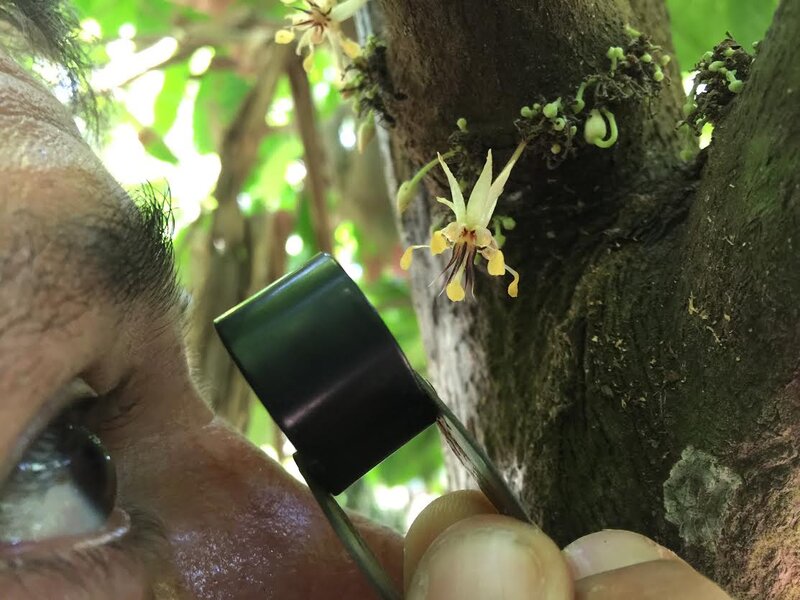Cacao evolution study could yield sweet results for chocolate industry
A new study finds the cacao tree may be a lot older than scientists thought. And that could be good news for the modern chocolate industry.
Understanding the early history and the early genetic diversity of the cacao tree may contribute to improving current models of sustainability for the chocolate industry. It could also lead to improving current ethical standards for the treatment of workers who produce the world's chocolate supply.
The study, published this month in the journal Frontiers in Ecology and Evolution, is one of the first to provide a cohesive examination of the evolutionary history of the cacao tree.
“Studies of the evolutionary history of economically important groups are vital to develop agricultural industries, and demonstrate the importance of conserving biodiversity to contribute towards sustainable development. [This study finds] for the first time that the source of chocolate, Theobroma cacao, is remarkably old for an Amazonian plant species,” said Dr. James Richardson, tropical botanist at the Royal Botanic Garden Edinburgh, UK, and lead author of the study, in a press release.
Just how old is the cacao tree? Dr. Richardson and his colleagues estimate it diverged from its ancestors approximately 10 million years ago, during the Miocene epoch, tens of millions of years after nonavian dinosaurs went extinct and millions of years before humans began to emerge.
The Miocene was a time of developing stability in seed-plant species: the University of California’s Museum of Paleontology reports that “by the end of the Miocene 95% of modern seed plant families existed, and that no such families have gone extinct since the middle of the Miocene.”
The diversification process produced an enormous amount of genetic diversity within the cacao tree, resulting in the creation of additional species that still may not be fully understood. But the scientists are hoping that their research won’t only yield new and yummy flavors of chocolate. They also hope that it will help protect the biodiversity of the cacao tree and its relatives.
“[N]ative populations, which have a history dating back millions of years, may harbor individuals that are resistant to disease or have novel [flavors] which may be utilized in a manner that could contribute to an environmentally and economically sustainable chocolate industry,” Dr. Richardson explains in an email to The Christian Science Monitor.
How did the researchers determine that this was the case?
The researchers examined and reconstructed the DNA sequences of several different groups of plants, each covering a wide geographic area. To detect the formation of new species, the researchers used fossils whose age had been previously determined, explains Dr. Richardson. Once the researchers knew when each branching event occurred, these events could then be associated with events in earth history.
Modern, cultivated cacao trees exhibit very little genetic diversity, making them even more vulnerable to threats like climate change. That's bad news for the chocolate business: the Swiss chocolate industry relies heavily on a supply from Ghana and Cote d’Ivoire, but Earth Security Group, a risk-analysis firm, predicts that thanks to rising demand, there could be a supply shortage as soon as 2020.
The biological diversity of early cacao trees, and the variety of species that exist, could offer some hope in addressing this problem; it suggests that there may be a greater variety of species available for modern farmers to cultivate than previously thought.
“We hope to highlight the importance of conserving biodiversity so that it can be used to augment and safeguard the agricultural sector. By understanding the diversification processes of chocolate and its relatives we can contribute to the development of the industry and demonstrate that this truly is the Age of Chocolate,” coauthor Dr. Santiago Madriñán, of the University of the Andes in Bogotá, Colombia, said in the release.
While the ethical production of chocolate is not the primary focus of the scientists’ study, it could prove a welcome additional benefit. Greater knowledge of the cacao tree and its relatives could broaden the sources for the world’s cocoa supply, allowing chocolate to be cultivated in regions that offer greater protection for workers, a welcome development in an industry blighted by reports of child labor.
But that may be beginning to change. Nestlé, one of the world’s leading providers of chocolate goods, is working towards eliminating the use of child labor in its supply chain. Called the “Nestlé Cocoa Plan,” it is the company’s “[aim] to improve the lives of cocoa farming communities and the quality of the cocoa we purchase,” according to its website.






